Hiroyuki Miura (PLUSVoice, Inc. President and Representative Director)| Realize the “true communication”
2025.07.08
Creator Expressing the Joy of Communicating Emotions through Sign Language Art and Live Painting
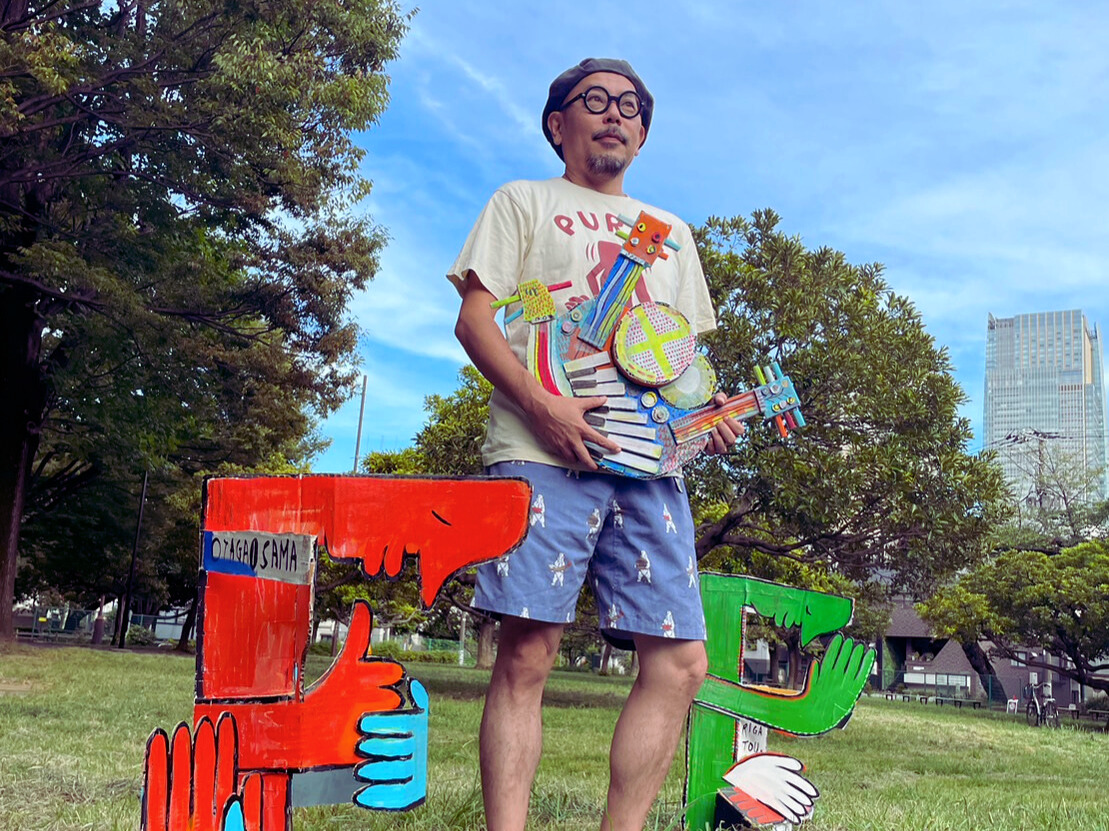
2023.09.22
Kado-san creates vibrant and pop sign language art under the concept of “TALKING HANDS”. Growing up alongside deaf parents, he values non-verbal communication, which is reflected in his work. His pieces convey an uncategorized, free-spirited worldview.
目次
Kado: I have been drawing pictures since I was a child. What made me different from other children was that my parents were deaf, so I used sign language and drawings to explain daily school events. I would say, “There’s 〇〇-kun’s house here, and there’s a shrine, and I went there with him and kicked the can.” When I was a child, I could not explain things well using only sign language, so I used to draw pictures to supplement my sign language.
I learned it by imitating my parents’ sign language, so my sign language is Nagasaki dialect. Moreover, I am often told that “Kado-san’s sign language is old.” That’s because I learned it from people in the past (laughs).
When I was in elementary school, I had a hard time joining in the lively conversation of my classmates. But I liked drawing pictures, so I would draw pictures of manga that were popular at the time so that everyone could see them (laughs). It was a tool for getting to know each other. I also drew pictures for children who asked for them.
Kado: When I was 19 years old, there was an old department store in my hometown of Nagasaki. At once all the stalls in front of the department store were removed for renovation work and the street became desolate. The owner of the department store asked me to paint on the wall until the renovation work started, and a designer from the clothing store where I worked introduced me to him. A designer from the clothing store where I worked introduced me to the owner of the department store, who wanted to ask someone to paint on the wall until the renovation work started.I went there every night after work and painted pictures of animals and other things on the 10-meter wide wall.
When I had completed about half of it, my parents started visiting me in the evening with snacks. That’s when my dad said, “It would be really nice to meet up with friends in front of this painting.” And I thought, “Oh, yeah. It would be interesting to have a picture that would serve as a landmark for deaf people when they meet here.” So I added a lot of sign language symbols to the pictures, such as “Hello,” “Thank you” and so on.
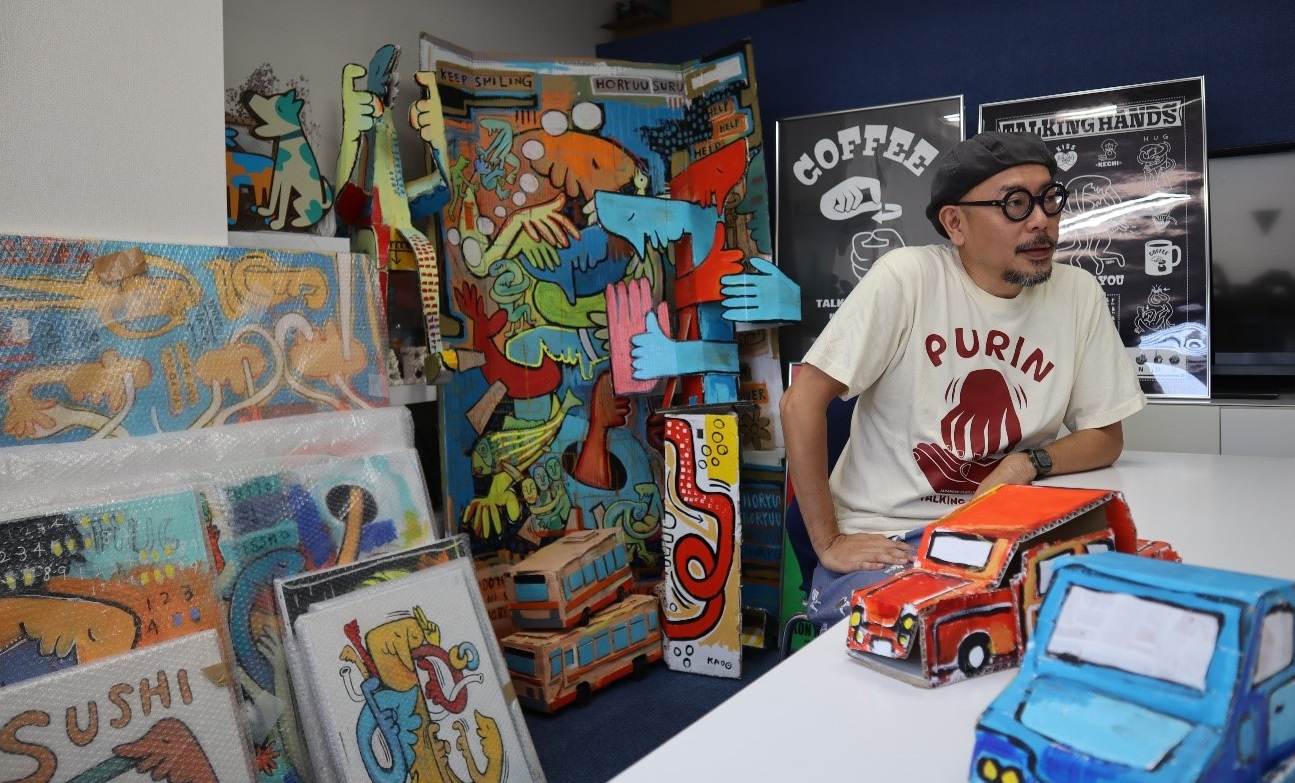
Kado:That’s right. Then, a friend who owned a gift shop saw it and said,”Kado-kun, this artwork is interesting,” pointing at the sign language drawings. You know how they do these hand movements when rapping, like this? (Demonstrating common rap hand movements). Well, that person thought the sign language drawings were related to rap hand movements (laughs).
I said, “No, no! These are sign language symbols,” and explained it to them. They were so moved and said, “This is art, but it’s also a language?! That’s amazing!” They wanted to turn these sign language drawings into T-shirts and sell them in their store. So, I created new artwork for the T-shirts, and they sold out immediately.
My parents would see people wearing the sign language T-shirts I designed when they were walking around town. It became so popular that my parents were deeply moved. They mentioned that when they were young, using sign language would often attract stares or even mockery. Deaf people didn’t like using sign language in public, and when they went to stores, they’d gather at tables away from other customers. They said, “Reflecting on those times, seeing young people today walking around the city in sign language art shirts is incredible.” Upon hearing that, I thought, “If we blend sign language and illustrations together into pop art, young people will enthusiastically bring sign language art fashion to the heart of the city, to the center of the world, and to the most prominent places.”
Kado: I had been drawing this character’s face even before I started drawing sign language pictures. I would make rough sketches so that I wouldn’t forget the picture when it popped into my head, and later I would draw the clothes, add colors, and do a clean sketch. But there was a good friend of mine from elementary school who often came to my house and said, “Can I have this picture? ” I think he probably has more of my pictures than I do (laughs). He says, “The rough sketch is better.”
With rough sketches, you don’t even know the gender of the characters. That allows the viewer to imagine whatever he or she wants, and to be moved or pleased. I thought it would be more interesting to leave room for the viewer’s imagination, so I began to make use of rough sketches.
Kado: I began using bright and colorful colors when I was young. I got to know an oil painter who gave me some guidance on painting techniques. However, he had certain rules like “Professionals don’t use black” or “You have to mix your own paints to create skin tones.” He would say various things like that. I thought to myself, “I’m not a professional, and I don’t need to adhere to these rules, especially when I want to apply colors based on the characters’ images in my paintings.” So, I started painting people in shades of yellow, red, and blue. It was a form of rebellion against what he advised. Plus, I’ve always had a fondness for bright colors, and I believed that everyone should have a good time looking at my artwork.

Kado: They are very happy that I use sign language as a motif. They seem to think that their children had a hard time because they are Deaf…. But I consider my parents being Deaf as part of my personality, and I talk about them in my interviews. My parents are always happy to hear that.
I believe that I am one of the answers to the questions that my parents have answered in their lives, so I feel that by talking openly to anyone, I am showing them that they have lived their lives openly.
Kado: I think I was rebellious. Against adults other than my own parents…. They are cool and I love them, but the people around me would say things like, “Poor you,” “You are trying so hard,” or “The weak are trying so hard,” or “You can’t hear, so you are lower.” When I was a child, if I felt that people around me were staring at me, I would use sign language to show people around me. Maybe I was sensitive to “adults who look down on me.
Kado: My father was the vice president of the Nagasaki Association of the Deaf at the time. So he would give talks on stage, young people would come to listen to him, and people loved him. He was a very generous person, always smiling and saying, “Wahahaha!” I thought he was cool, even as a child. Whenever a friend of mine came over, he would tell my friends to come over and have a meal. Everyone liked my parents. I thought to myself, “Wow, they have human power!”
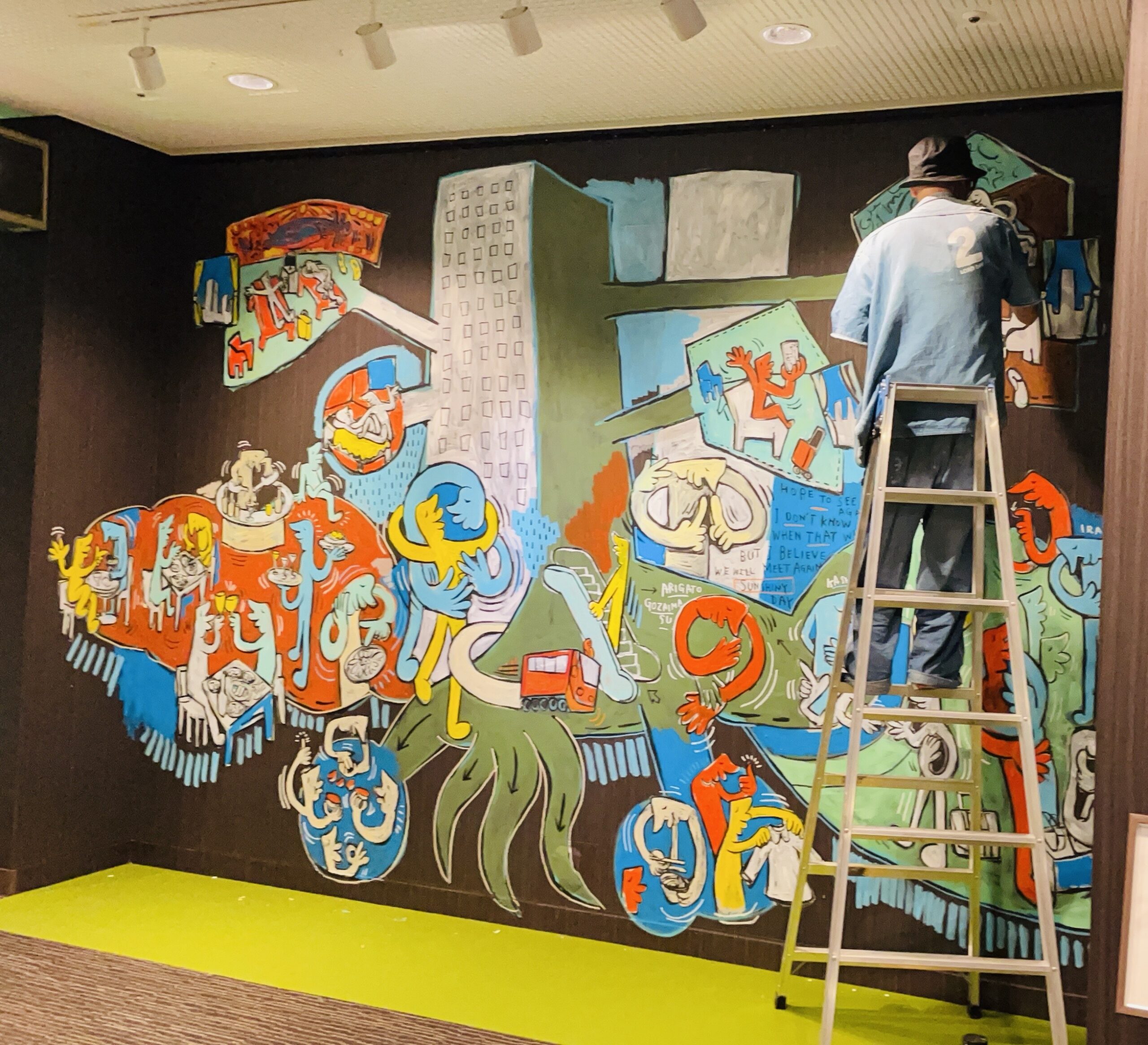
Kado: I think that more and more people from various countries will visit and live in Japan in the future. When communicating with people from various countries, it is impossible to say, “Let’s learn both Japanese and foreign languages now.”
For example, when you meet a Deaf person, there are those who try to communicate with him or her, and there are those who say, “I’m sorry, I don’t understand…” and stop communicating with him or her. But I think, “What methods are there for communicating?” I try various ways, such as written communication, gestures, and mouth movements. The worst thing is to run away, so I try to minimize that as much as possible.
When making friends, I think, “If words don’t work, I’ll give them a gift,” or “I’ll play a musical instrument to communicate,” or, if it were me, “I’ll draw a picture to show them”. I think it would be good if everyone has at least one thing that they can use to convey their feelings through communication other than words, even if they are not good at it.
Not getting too caught up in culture or language, but leaving each other alone in a good way. I think it would be best if we can do fun things together in a relaxed and carefree manner.
Kado: My workshops are fine as long as they are fun. After the workshop is over, the paintings may have an impact on the participants’ lives, but when I am painting, I like to keep it as simple as possible.
Music, dance, and painting are all inherently free forms of self-expression. If you bring rules into it, it is not free. That is why I try to be as free as possible in my live painting, as long as the situation allows.
When we want to understand people with disabilities too strongly, we tend to categorize them by saying, “People with disabilities are like this”. This can be a barrier to mutual understanding. It is unfortunate that our good intentions become a barrier. That is why I think it is good for children to have contact with people from all walks of life, including the deaf, people in wheelchairs, foreigners, and others. I think it will expand your world and make you more free.
I hope that all of the people in the world will accept each other without categorizing, as it is.
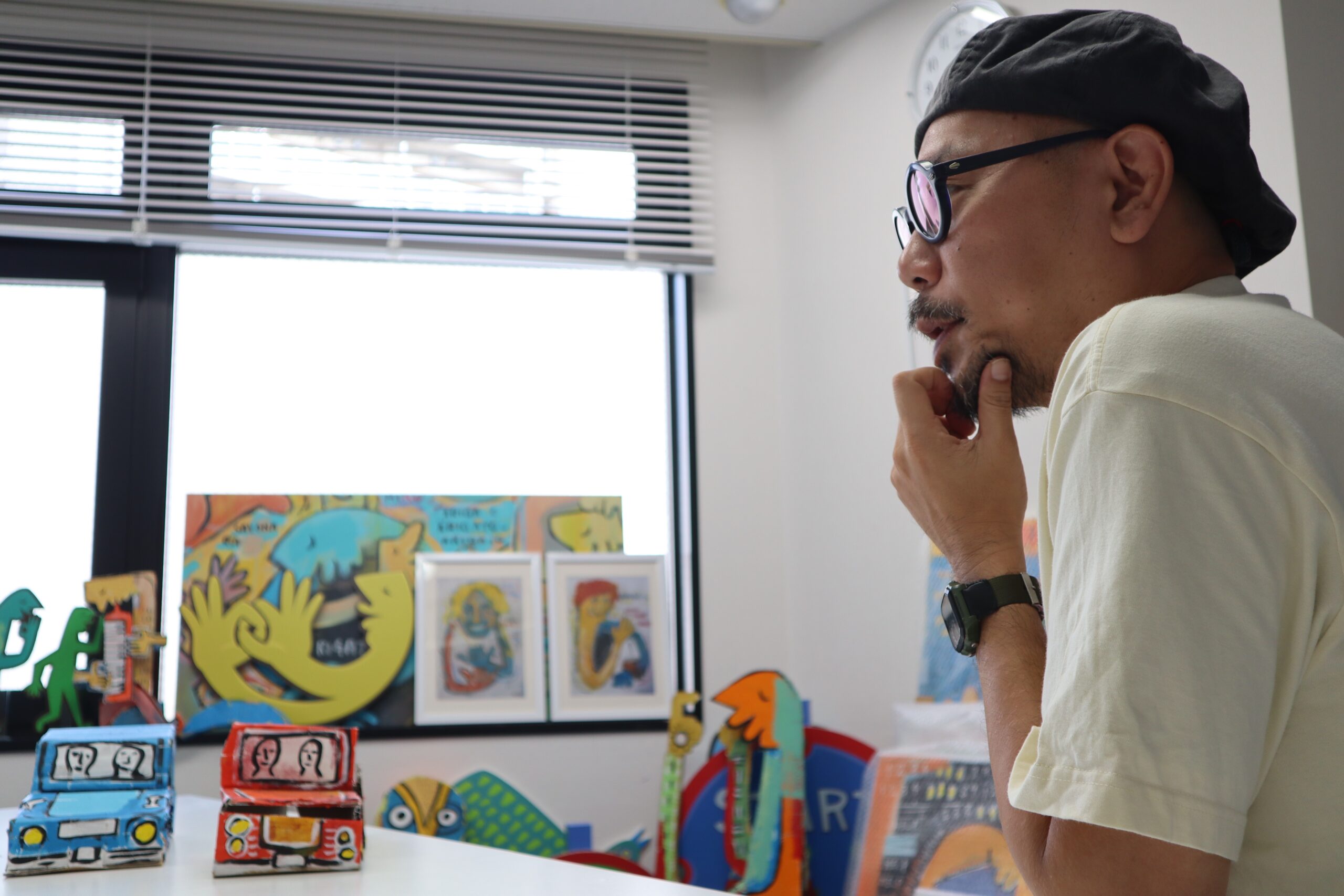
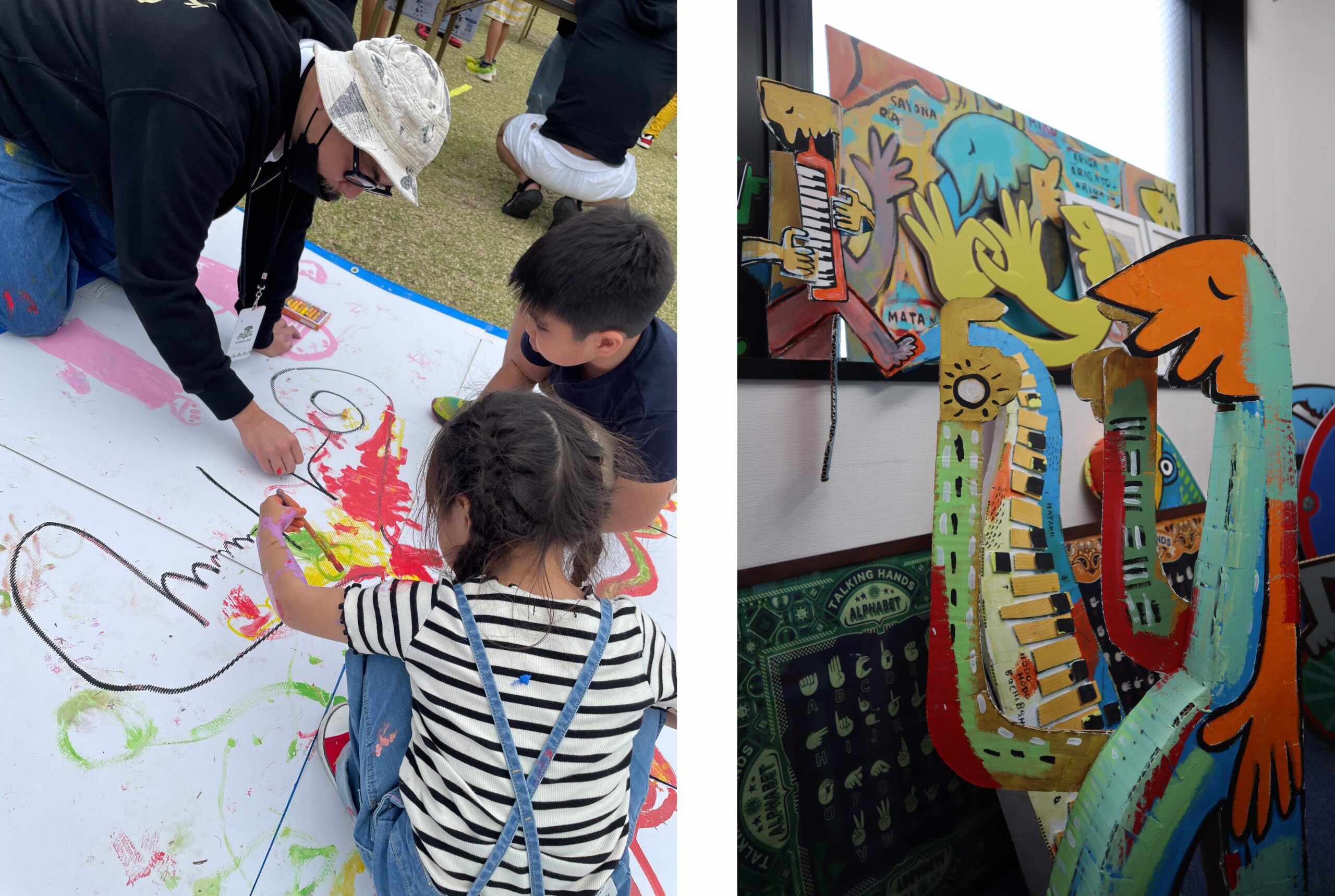
Hidehiko Kado / Born in Nagasaki
Illustrator / Artist Growing up with deaf parents, Kado-san started drawing at a young age to express emotions and thoughts that couldn’t be fully conveyed through spoken language or sign language. He has made art as a form of communication and has taken “TALKING HANDS,” themed around artistic expression and sign language, to workshops and live painting events both in Japan and internationally. He has authored sign language art books, essays, and illustrated books, showcasing his diverse creative talents. In recent years, he has been involved in various projects, including creating in-store art for Japan’s first Signing Store, “Starbucks Coffee nonowa Kunitachi-ten,” character design for NHK anime “Chara and Otamajakushi Island,” and illustration design for Fuji Television drama “PICU.” His artistic contributions continue to expand in various fields.
Website:KADO4LIFE
Instagram:kado_hidehiko
X:@kadohide
2025.07.08
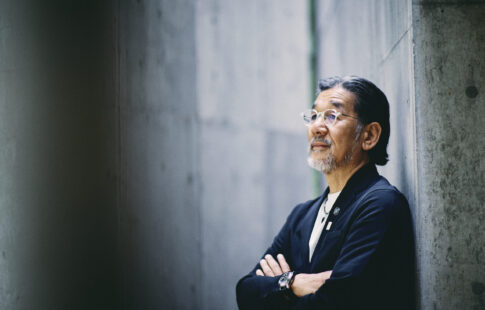
目次It all started with the worst MC of his lifeThe reality of being left out of information Issues highlighted […]
2025.07.08
目次It all started with the worst MC of his lifeThe reality of being left out of information Issues highlighted […]
2025.07.08
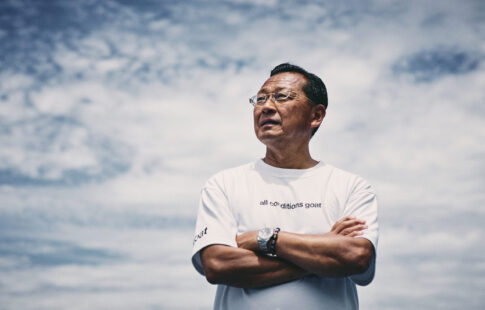
目次“An charismatic person appears…” Reforms to make athletes’ dreams come trueHakone or the w […]
2025.07.08
目次“An charismatic person appears…” Reforms to make athletes’ dreams come trueHakone or the w […]